Article disclaimer “NASA’S paid lairs acknowledge the atmosphere is full of aerosols, they acknowledge the effects of those aerosols on the climate, but as expected from time the power structure the major contributing source of the atmospheric aerosols, global geoengineering is completely ignored.”
STORY.Changing Our Weather One Smoke Stack At A Time.
By http://earthobservatory.nasa.gov/Features/Pollution/
Story by EarthObservatory.nasa.gov – On a soggy morning this past April, Daniel Rosenfeld moved briskly through an overcast parking lot into one of many monolithic brick structures that dot NASA’s Goddard Space Flight Center. When he arrived at the conference room, he switched on a laptop and began bringing up satellite images of what looked like an apocalyptic vision of the East Coast. From Massachusetts to North Carolina, swirling red, orange and yellow clouds floated above a blue landscape.
Peering over his glasses and intently at the screen, he pointed to an especially fiery spot on the map near the border of Pennsylvania and New Jersey. “The atmosphere here is fully polluted,” he said. “Those colored streaks are mostly due to man-made aerosols.”
He went on to explain that aerosols in this instance have little to do with household cleaning products. For atmospheric scientists such as him, aerosols are defined as any microscopic particle suspended in the atmosphere. Not only do they make our sunsets particularly vivid and our air particularly gritty on a hot summer’s day, but they also create clouds in the sky. While most atmospheric aerosols originate from natural sources such as the sea spray and volcanoes, he said nearly all the color enhanced yellow and orange clouds in his image have been affected by aerosols created by factories, power plants and cars up and down the East Coast.
For the past six years, Rosenfeld and a team of scientists from the Hebrew University of Israel used NASA satellites and remote sensing techniques to track how man-made aerosols change clouds. They recently discovered that aerosol particles from factories and power plants increase the number of droplets in clouds they pollute. In doing so, the pollutants create brighter clouds that retain their water and do not produce rain. These results put to rest a decades-long debate about human-generated pollutants and biomass burning as well as verify that our manufacturing processes and our need for energy are changing the global climate and local weather systems.
The data used in this study are available in one or more of NASA’s Earth Science Data Centers. http://nasadaacs.eos.nasa.gov/
What Are Aerosols? contains background information about aerosols and their effect on climate.
Studying Ship Tracks
Throughout most of the twentieth century, the scientific community was only certain about a few basic facts regarding cloud formation. They knew that in order to form, clouds require water vapor as well as tiny microscopic particles (aerosols) from the surface of the Earth. When water evaporates into the atmosphere, it spreads evenly throughout the surrounding air often to the point where the relative humidity is greater than 100 percent. Aerosols that dissolve easily in water, such as ammonium sulfate and sea salt, give the excess water molecules something to cling to. These aerosols act as the nuclei, or “seeds,” around which cloud droplets take shape, and together these droplets form clouds. Were it not for particles in our atmosphere, the sky would almost always be clear and the air around us thick and humid (King et al., 1995).
Many researchers suspected that as the concentration of these particles increases, the properties of the cloud could change. However, they remained unclear on exactly what these changes would be, the effects aerosols could have on rainfall, and most importantly where aerosol particles come from. Many believed that humans produce a large number through the burning of fossil fuels and plants (biomass).
In the late 1980s and early 1990s, a series of investigations on the exhaust from ship’s smokestacks answered some of these questions. Not significant sources of pollution themselves, ships burn fossil fuels and release their exhaust in the form of sulfur dioxide, a gas that leads to the formation of sulfate aerosols in the atmosphere. The exhaust produces clouds that are relatively low in elevation and resemble larger versions of airplane contrails. Unlike contrails, these “ship tracks” are ideal for study since they remain in the air for many hours and are surrounded by relatively pristine marine air (King et al., 1993).
Initially, the ship tracks were used to see if an increasing number of aerosols from pollutants would make the clouds brighter. The scientists believed the additional aerosols from the ships would give the water vapor more nuclei to cling to, so that a greater number of smaller drops would form in the cloud. These smaller drops, in turn, would make the cloud more reflective to sunlight. The same phenomenon can be seen when ice cubes are crushed. As the ice is broken up, the once smooth surface is shattered into many tiny surfaces at varying angles. These tiny surfaces reflect incoming light in all directions and cause the crushed ice to appear white and opaque. Water droplets do not contain all these ridged surfaces, but the researchers were fairly sure their fragmentation would have a similar effect.
Through satellite observation and in situ aircraft measurements, scientists not only showed that their hypothesis was correct, but they also came across an effect that no one had foreseen. In addition to making the clouds more reflective, the aerosols were causing them to retain water and to stop drizzling. The cloud seeding by the ships’ exhaust made the droplets so small that they could no longer easily merge together to reach the size needed for gravity to pull them to the ground. Since no drizzle came out of the seeded clouds, the cloud water just kept building up (King et al. 1995).
But to take these findings to the next level and prove that man-made sources of pollution make clouds brighter and less likely to precipitate would require testing a wide range of factories and power plants on land. Many deemed it too difficult to measure the effects of aerosols over land given the current level of technology. The wind currents and convection over land are tumultuous, and the clouds are much thicker. In nearly any given industrialized area there are so many things that cause pollution that it’s hard to isolate just one source. In the eastern United States for instance, the number of aerosols spewed out by power plants and factories merge together in the sky to create one big, thick soup of pollution.
Pollution Tracks over Land.
Luckily, when Rosenfeld began studying the effects of man-made aerosols on cloud formation in 1995, he did not investigate pollution sources and aerosols in the eastern United States. He said that for several years on satellite images, he’d noticed ship track-like features over land in more pristine areas of the world such as southeastern Australia and Canada. These clouds would start at a single point on an image and then gently fan out, forming wispy cloud trails that extended up to thousands of kilometers. “I’m surprised nobody noticed these before,” he said. “Or maybe it just didn’t occur to anyone to study them.”
When he checked on maps and with people he knew who lived in these areas, he found that these “pollution tracks” emanated from man-made pollution sources and were then carried by the wind for hundreds of miles. One of the tracks originated at a mining and smelting compound in Flin Flon in Manitoba, Canada; another was created by a lead smelter plant in Port Pirie, Australia; and still another arose from a power plant in Port Augusta, Australia (Rosenfeld, 2000). Even though these pollution tracks looked like big versions of the ship tracks, Rosenfeld did not assume that they had the same properties.
He explained precipitation over land develops differently than it does over the sea. “Over land, cloud droplets are usually smaller to begin with, so the clouds have to grow larger and deeper for precipitation to occur,” said Rosenfeld. Vertical currents, created by heat rising from the Earth’s surface, allow the clouds to grow over land. As the water vapor rises, it becomes colder so that additional condensation occurs, creating bigger and bigger drops as the cloud grows taller. Precipitation then occurs in one of two ways (Toon, 2000).
The clouds with small droplets in the image at far left, indicated by yellow, were seeded by the aerosols from the copper smelter in Flin Flon, Manitoba, Canada. Pollution is particularly noticeable from satellites in areas where the air is otherwise clean. (Images by Daniel Rosenfeld, Hebrew University of Israel)
The first way is when the droplets reach a radius of more than 14 micrometers, roughly one-sixth the thickness of a human hair, in the upper layers of the cloud. Smaller droplets just float in the air. But at this 14-micrometers threshold, the drops are just big enough to start colliding with each other and merging into rain drops, which fall without evaporating or being pushed back up by convection currents (Rosenfeld et al., 1998). “Air is then coming up as the rain is coming down through the updraft,” explained Rosenfeld. When the raindrops descend through the cloud, they collide with even more droplets and pick up more mass. They get to the point where they’re so large they exit from the cloud altogether and fall to the ground as rain.
The second way precipitation occurs is when cloud droplets are pushed so far up in the atmosphere that they freeze. These ice particles can collect the yet unfrozen drops more quickly and evaporate slower than water particles. Once the cloud reaches the point where its upper layers are frozen, the droplets are almost guaranteed to exceed the 14-micrometer limit (Rosenfeld et al., 1998).
If the studies on ship tracks did apply to land, then industrial aerosols should be creating droplets so small that they could not reach the precipitation threshold even as the cloud grew to towering heights. In addition, the cloud tops should appear more reflective in satellite data. To see if this was actually occurring, Rosenfeld combined his extensive knowledge of how the atmosphere works with a number of remote sensing techniques, some developed at NASA’s Goddard, and came up with a way to use satellites to estimate the effects the pollutants were having on clouds.
The satellite instrument Rosenfeld and his colleagues employed in this first set of experiments was the Advanced Very High Resolution Radiometer (AVHRR) aboard the National Oceanic and Atmospheric Administration’s (NOAA) operational satellites. These satellites move in nearly circular orbits approximately from pole to pole around the Earth and allow the AVHRR to gather imaging data on the planet’s entire surface. The instrument has a number of different sensors (photoreceptors) that detect light of varying colors (wavelengths) being reflected off of or emitted from the Earth. One light detector records only the yellow-green, orange and red visible light coming off the Earth (band 1), one observes the near-infrared light(band 2) just outside the range of human sight, another picks up on all the mid-infrared light (band 3), and still another detects the thermal radiation given off by objects (bands 4, 5). The data these satellites collect are beamed back to the surface, where they can be manipulated and turned into computer images (Hastings, 1998).
To measure the growth of the clouds from space, Rosenfeld gathered AVHRR data of the pollution tracks. He then isolated areas in the satellite data where pollution tracks were present and looked as if they were affecting the clouds. Using thermal band data, he was able to measure the temperature of the tops of these aerosol-laden clouds. “The higher the clouds are, the colder they are,” said Rosenfeld. Since cloud tops grow colder because of an increase in altitude, this measurement is equivalent to how developed the clouds are. He then obtained a rough estimate of the average radius of the droplets on the cloud tops by forming a ratio between the imaging data of the mid-infrared band and those of the visible light band (Rosenfeld et al., 1998). Using these manipulated data and a little false color, he created the somewhat ominous looking computer images he displayed on his laptop.
Rosenfeld analyzed these images and satellite data to understand how the clouds were evolving over time and whether the droplets in the clouds were reaching the size needed to precipitate. Essentially, any given image of a string of clouds, polluted with aerosols or not, contains clouds in nearly every stage of development. Some would be fully developed anvil-shaped cumulonimbus clouds and others just thin, marine-like cumulus clouds. “Having only one snapshot, I make the assumption that having different clouds at different heights are equivalent to the same clouds at different times,” he said. He then observed the radius of the cloud droplets as the cloud developed to see if the droplets were growing large enough to precipitate.
What he found supported the ship track studies. Clouds affected by pollution tracks would grow to be very tall, even to the point where the water was freezing, and yet, the radius of the droplets at the tops of the clouds would not reach the size they needed to precipitate. In unpolluted areas, clouds would begin to precipitate long before they reached heights where the droplets were freezing (Rosenfeld, 2000).
From these initial experiments, his conclusion was that the aerosols from power plants and factories alike were breaking up the water in the clouds into droplets so small that they were not reaching the radius needed to precipitate. In addition, it appeared that the pollutants were making it harder for the droplets to freeze even if they reached sub-freezing altitudes. “If this ice process is suppressed then the clouds have no way to precipitate,” Rosenfeld noted. Only in rare instances, such as in paper mill emissions, where the aerosols put forth were actually larger than natural aerosols, would the pollutants make the cloud drops bigger and actually cause the clouds to precipitate more than unpolluted clouds.
Rosenfeld ran similar experiments with forest and brush fires. Though the biomass burning creates more dispersed polluted clouds than the pollution tracks, the aerosols they put out have a very similar effect on the clouds (Rosenfeld, 1999).
“The problem with AVHRR is that we cannot penetrate the clouds, so the results were not considered to be conclusive evidence,” said Rosenfeld. Because the NOAA instrument could only view the tops of the clouds, it could not measure how much water the clouds contained or if the water droplets beneath the surface of the cloud, for some unseen reason, were reaching precipitation radius. So these initial findings could not be considered definitive proof that aerosols were having an effect on the precipitation.
Then, with the launch of NASA’s Tropical Rainfall Measuring Mission (TRMM) satellite in 1997, Rosenfeld saw an opportunity to prove his speculations. This satellite was initially launched to measure tropical precipitation and to estimate the vertical profile of the resultant latent heat of condensation released into the atmosphere, leading to an understanding of the role played by this heat in driving the circulation of the global atmosphere. The satellite orbits the Earth traveling from west to east, back and forth across the equator, taking measurements of the clouds above our planet’s surface each day from 35 degrees latitude north of the equator to 35 degrees south. In the Western Hemisphere, this zone extends roughly from the northern border of Alabama to the southern tip of Uruguay (Graham, 1999).
While TRMM does have an instrument called a visible and infrared sensor that retrieves the same type of data as AVHRR, it also contains two additional instruments for viewing what occurs inside the clouds. The first, known as the precipitation radar, does exactly what its name implies — it bombards the clouds with radio waves and then receives the signals that bounce back. The radar is rigged so that the only signals that bounce back are from droplets that are at least the size of raindrops. By retrieving data from this instrument, scientists can tell whether a cloud is precipitating or not. The other instrument vital to Rosenfeld’s research is known as the passive microwave imager. This instrument picks up solely on one frequency of microwave radiation that cloud water and ice absorb and emit (Rosenfeld, 1999). “So the passive microwave is something that is sensitive to the total amount of water in the cloud with a little sensitivity to the size of the particles,” Rosenfeld explained. In short, when low microwave readings show up on this instrument for clouds floating above a landmass, it means that the clouds as a whole contain much water.
Rosenfeld gathered TRMM satellite data over many of the same factories and power plants he examined with AVHRR. Using the visible and infrared sensor instrument data, he compiled estimates of effective radius and cloud top temperature on both polluted and unpolluted clouds. The results were nearly identical to the readings he derived from the AVHRR data. Rosenfeld then looked at the precipitation radar and microwave imaging data to see what was going on inside the clouds. Sure enough, the clouds in the path of the aerosols were not precipitating. Like the ship tracks, the clouds contained significantly more water than unaffected clouds, and they were on average brighter from above (Rosenfeld, 2000). Again, he ran the same tests on forest and brush fires and came up with an identical conclusion (Rosenfeld, 1998).
As a follow up to these experiments, Rosenfeld approached the engineers at these factories that were producing the pollution tracks and asked them how many aerosols their plants’ produced. The results were what he expected. The plant in Port Augusta, for instance, was putting out nearly 43 kilograms per hour of ash particles that were all the right size for breaking up the water in clouds. “And they were using electrostatic precipitators, which capture most of the ash,” said Rosenfeld.
He also found that the type and number of cloud condensation nuclei coming from these smokestacks was much more varied and potent than the ship tracks. Ship tracks generally burn diesel fuel that throws sulfur dioxide into the air, which becomes sulfate aerosols through chemical reactions. On the other hand, factories put out not only sulfur dioxide, but also a large number of smoke and ash particles. These react immediately with the clouds and moisture in the air, so that the suppression of the cloud precipitation starts at the stack and then become more pronounced as the sulfur dioxide converts to sulfate aerosols.
Original story.
http://earthobservatory.nasa.gov/Features/Pollution/




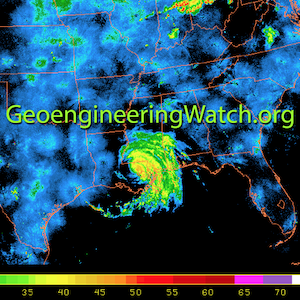
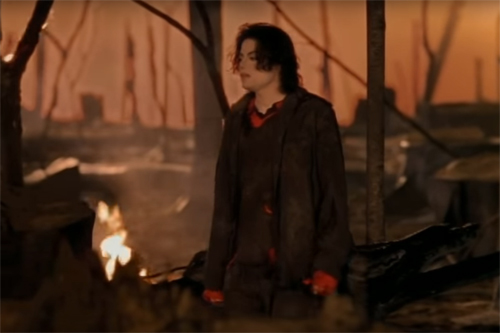


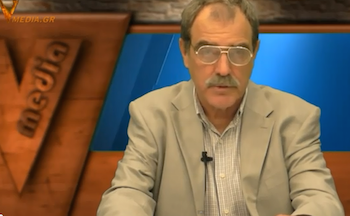
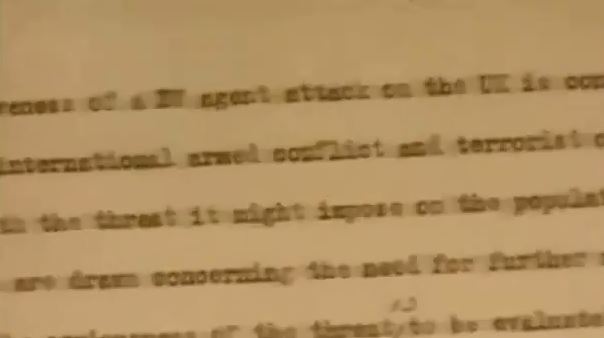
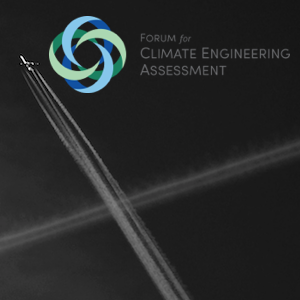
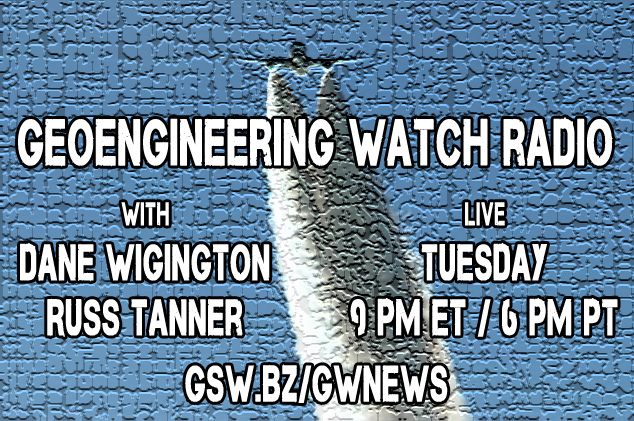

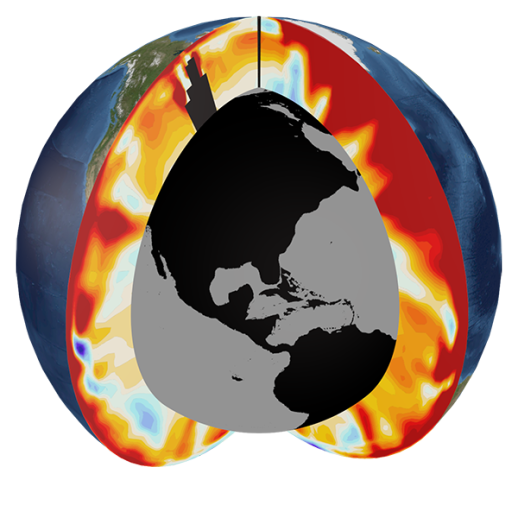
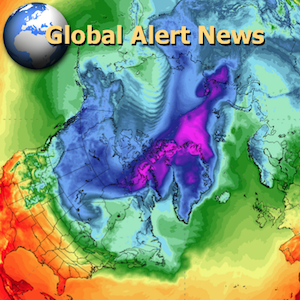
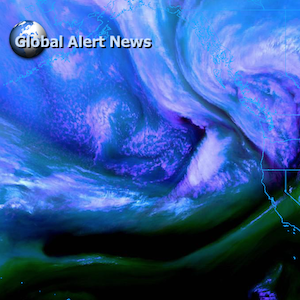


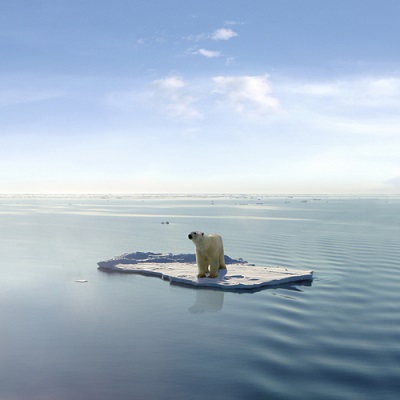
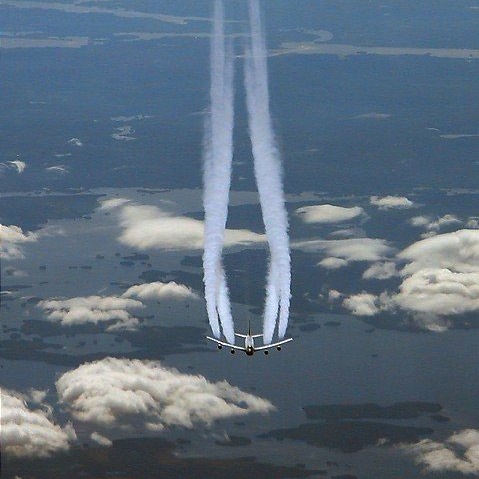
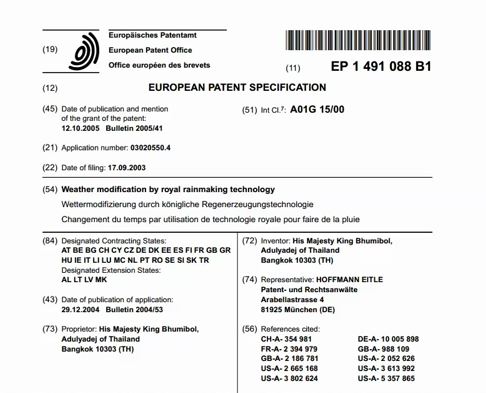




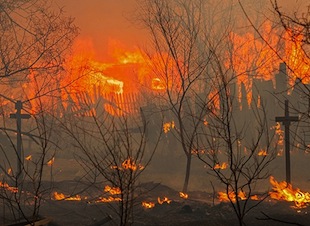

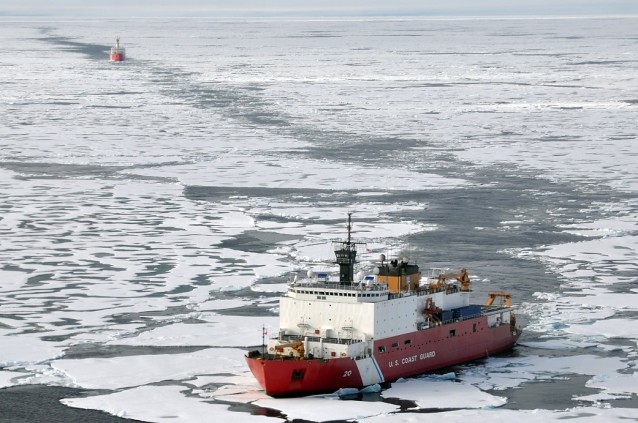
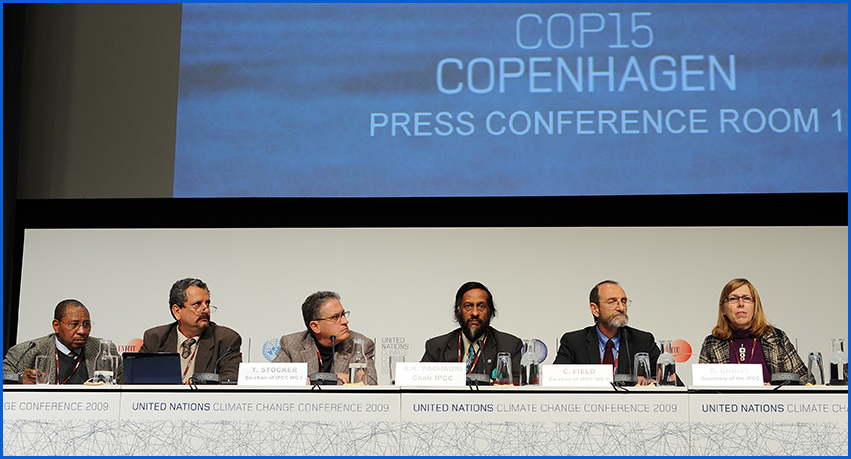

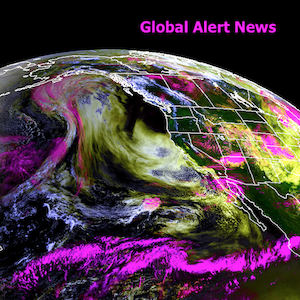


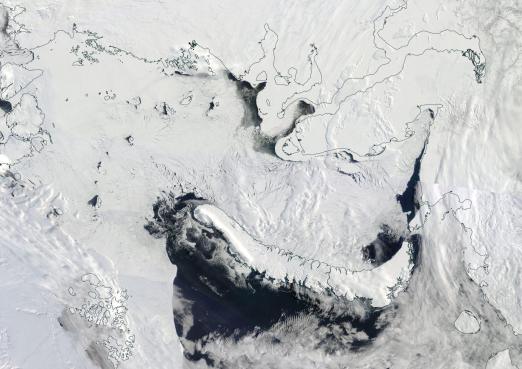
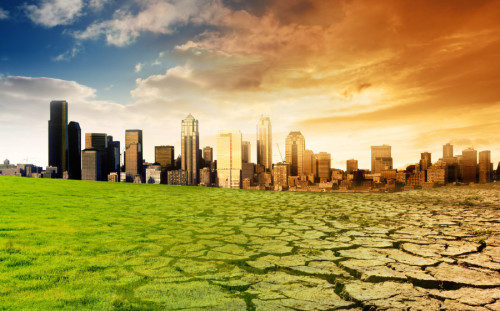








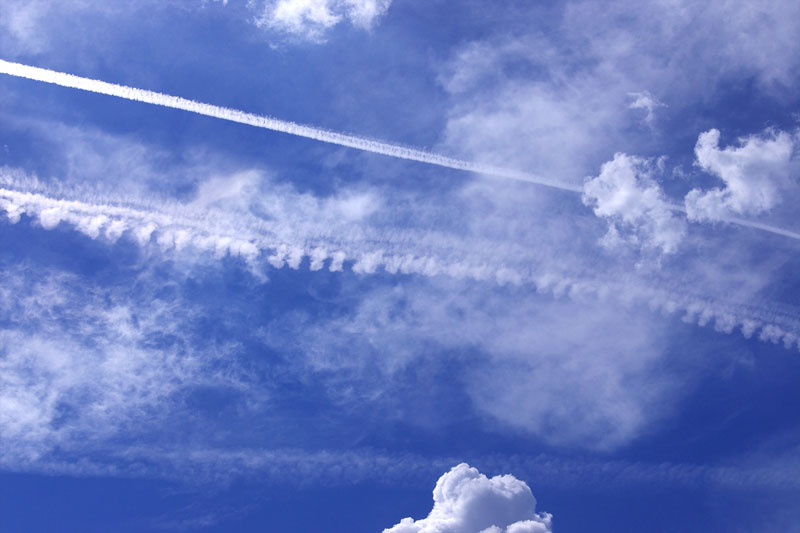
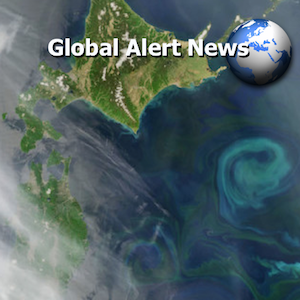


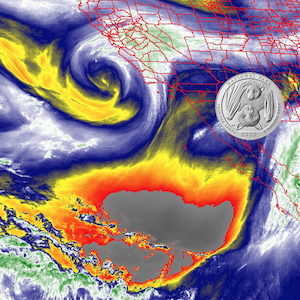

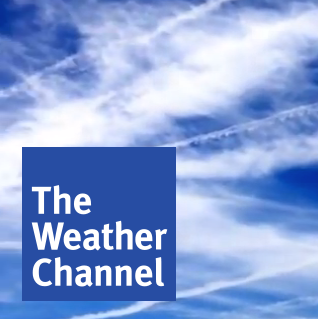


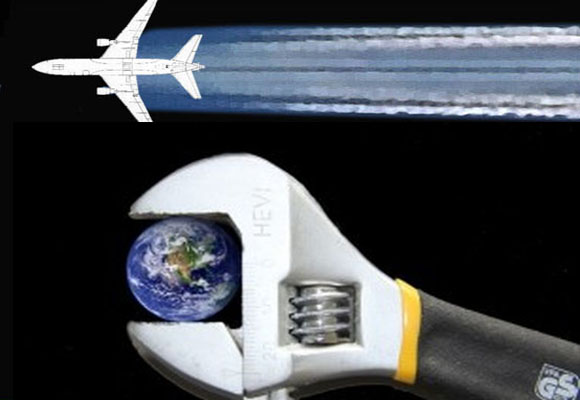

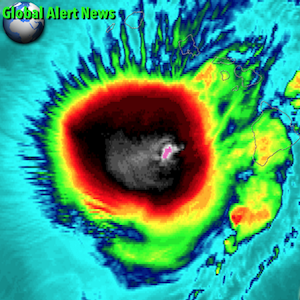

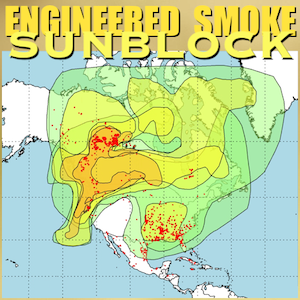
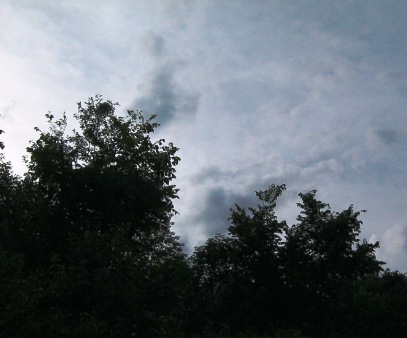


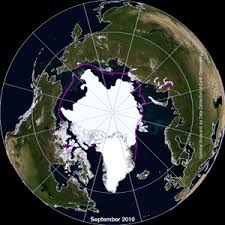
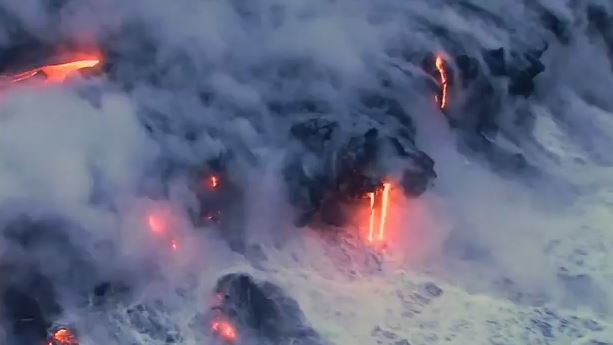



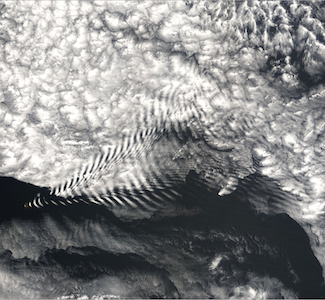
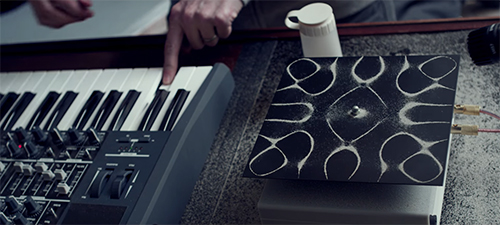
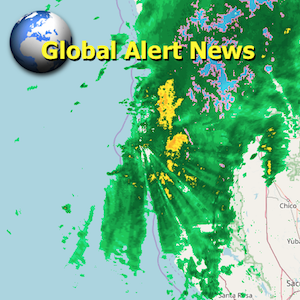
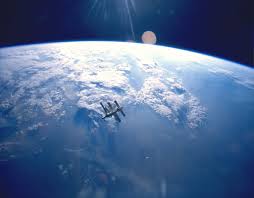
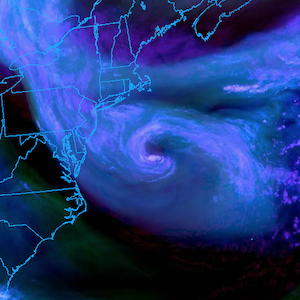
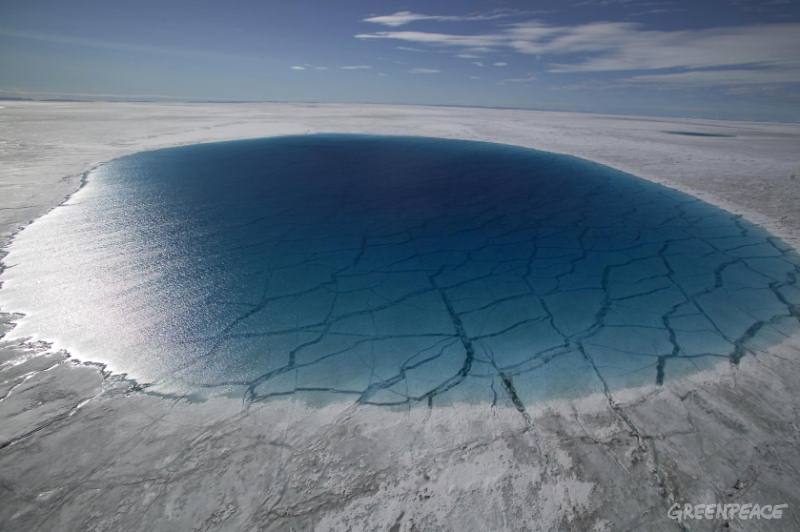
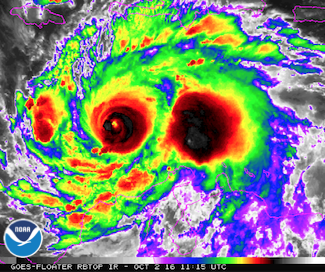

3 Responses
I agree, why do more people not understand the Pinatubo phenomenon, how it worked, and geoengineering? *** NASA: 1991 an aerosol solar reflective layer surrounded Earth in stratosphere within 21 days after Pinatubo eruption, the layer remained 2 yrs deflecting sun and causing entire world cooling of 0.60 (1 degree,5 degrees globally would be ice age). A reflective layer associated with only big eruptions that cools worlds. Ancients spoke using ideogram, ideograms use what you see to associate. Originally created with a reflective outer layer was the biggest of the volcanic pyramids of Giza. Atmospheric science, they sent the idea how to stop warming. Sphinx wears a klaft to tell you the answer protects man and beast from sun….Should think why they spent their lives sending the way to cool Earth
Hello Judith, yes, Penatubo had an overall cooling effect, geoengineering’s overall impact is catastrophic. https://dev.geoengineeringwatch.org/global-weather-modification-assault-causing-climate-chaos-and-environmental-catastrophe-2/
Here’s to Evergreen Aviation one of the stupid humanity sellout Nazi organizations along with NASA
You make it look like you are taking care of the Earth and helping us in time of crisis. Yet at the same time you use your supertankers to dump toxic poisons in the air. I wonder how it feels to be so stupid to think you are doing something good when in reality you have been duped or if not duped you are a mass murderer deserving to be hated. That will come to you when the word keeps getting spread that you are responsible for Chemtrails. I’m against chemtrails and will expose all those lying to the public and continuing to destroy not only the habitat but the lives of countless millions. it’s just like Germany and the killing of millions of humans in gas camps. Now the Earth has become a gas chamber and you are the one pushing the buttons and making death come to the majority of the human race. Idiot! I will expose you endlessly until I have humiliated you publicly as a disgrace to the human population. You can email me back to talk about this and meet in person. Let me hear if you can speak the truth. Or maybe someone else is giving the orders and you are just following those orders I want to know the truth. DanYou make it look like you are taking care of the Earth and helping us in time of crisis. Yet at the same time you use your superr tankers to dump toxic poisons in the air. I wonder how it feels to be so stupid to think you are doing something good when in reality you have been duped or if not duped you are a mass murderer deserving to be hated. That will come to you when the word keeps getting spread that you are responsible for Chemtrails. I’m against chemtrails and will expose all those lying to the public and continuing to destroy not only the habitat but the lives of countless millions. it’s just like Germany and the killing of millions of humans in gas camps. Now the Earth has become a gas chamber and you are the one pushing the buttons and making death come to the majority of the human race. Idiot! I will expose you endlessly until I have humiliated you publicly as a disgrace to the human population. You can email me back to talk about this and meet in person. Let me hear if you can speak the truth. Or maybe someone else is giving the orders and you are just following those orders I want to know the truth. Dan